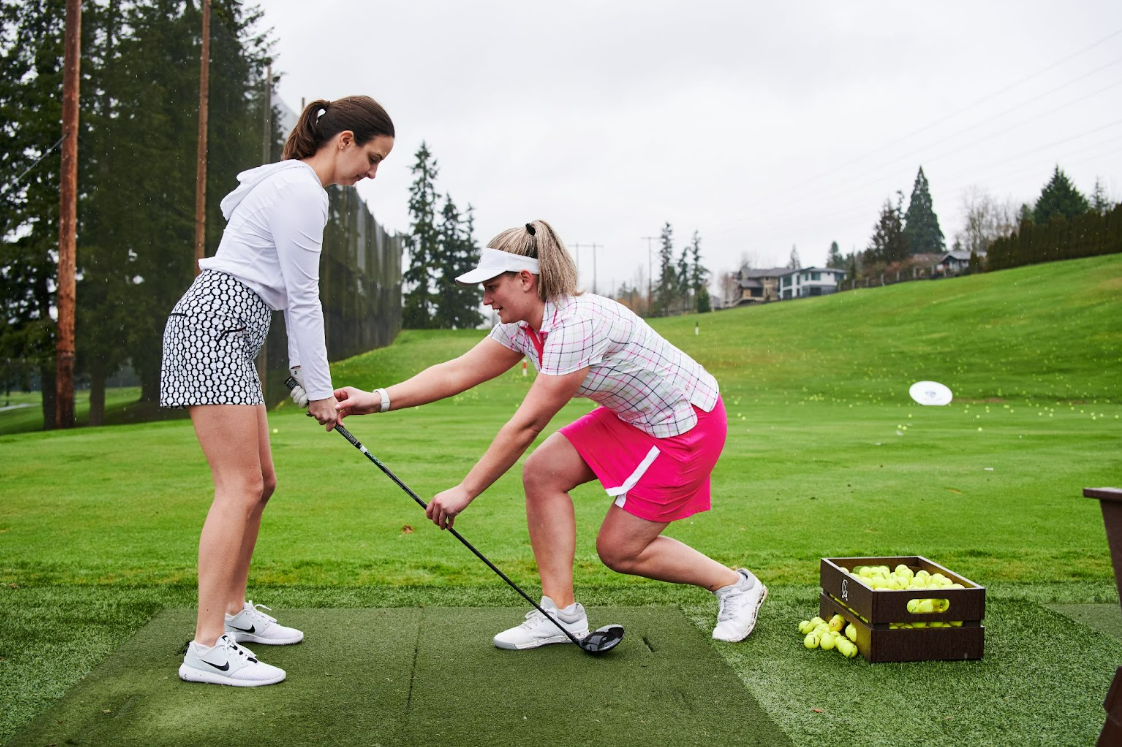From Novice to Pro: Learning How to Play Golf
Golf is a sport that offers both physical activity and mental stimulation. Whether you're a complete beginner or already have some knowledge of the game, this article will guide you on your journey from novice to pro. We will explore the basics of golf, master essential techniques, learn about the rules and etiquettes of the game, and discover ways to improve your golf game. By the time you finish reading, you'll have a solid foundation to develop your golf skills and enjoy this lifelong sport.

Understanding the Basics of Golf
The History and Evolution of Golf
Golf has a rich history that dates back centuries. Its exact origins are debated, but it is widely believed to have originated in Scotland during the 15th century. Initially, it was played on natural terrains with handmade clubs and balls.
As the popularity of the game grew, so did the demand for dedicated golf courses. The first golf course, known as the Old Course at St Andrews, was established in the 16th century. This marked a significant milestone in the evolution of golf, as it provided a standardized playing surface and allowed for more structured gameplay.
Over time, the game continued to evolve, with advancements in equipment and rules. In the 18th century, the gutta-percha ball was introduced, replacing the featherie ball. This new ball, made from the sap of the gutta-percha tree, offered better durability and performance, leading to improved gameplay.
In the 19th century, golf experienced a surge in popularity, particularly in the United Kingdom and the United States. The formation of golf clubs and the establishment of professional tournaments further solidified golf's place as a beloved sport.
Today, golf is a global sport enjoyed by millions of people around the world. It has become a symbol of prestige and leisure, attracting players of all ages and skill levels.
Essential Golf TerminologyBefore diving into the game, it's crucial to familiarize yourself with some common golf terminology. Knowing these terms will help you understand the instructions and communicate effectively with fellow golfers and instructors.
One of the most important terms in golf is the "tee." The tee refers to the designated area where the ball is placed at the beginning of each hole. It is usually a small peg made of wood or plastic.
The "fairway" is the area of short grass between the tee and the green. It is the main playing area of each hole and is typically well-manicured to provide a smooth surface for shots.
The "green" is the final destination on each hole. It is a small, highly maintained area with short grass and a flagstick marking the hole. The objective is to get the ball into the hole on the green with as few shots as possible.
A "bunker" is a hazard on the golf course, typically filled with sand. It is strategically placed to challenge players and requires skillful shots to escape. Bunkers add an element of difficulty and strategy to the game.
Lastly, a "putt" refers to a stroke made on the green to roll the ball into the hole. Putting requires precision and finesse, as the green's surface can be tricky to read and navigate.
Learning these basics will make it easier to follow along as we delve deeper into the game.
Equipment Needed for GolfGolf requires a few essential pieces of equipment to get started. The most important is a set of golf clubs, which typically includes irons, woods, wedges, and a putter. Each type of club serves a specific purpose and is designed to hit the ball at different distances and trajectories.
When choosing a set of golf clubs, it's important to consider your skill level and budget. Beginners may opt for a starter set, which usually includes the essential clubs needed to get started. As you progress and improve your game, you can invest in more specialized clubs tailored to your playing style.
In addition to clubs, you'll also need golf balls. Golf balls come in various designs and constructions, each offering different levels of distance, spin, and control. It's a good idea to experiment with different types of balls to find the one that suits your game best.
Other equipment needed for golf includes tees and a golf bag. Tees are small pegs used to elevate the ball when teeing off. They come in different lengths to accommodate different club sizes and shot preferences.
A golf bag is essential for carrying and organizing your clubs, balls, tees, and other accessories. Golf bags come in various styles, including carry bags, stand bags, and cart bags. Choose a bag that suits your needs and preferences, considering factors such as weight, storage capacity, and ease of transportation.
As you progress in your golf journey, you may consider investing in additional equipment to enhance your gameplay. A golf glove can provide better grip and control, especially in hot and humid conditions. Golf shoes with spikes or specialized soles offer improved traction and stability on the course.
A rangefinder is another useful tool that can help you accurately measure distances to various targets on the course. This can assist in club selection and shot planning, ultimately improving your overall performance.
However, it's important to note that as a beginner, you don't need to spend a fortune on top-of-the-line equipment. Focus on learning the fundamentals of the game and gradually upgrade your equipment as you progress and become more committed to the sport.
Mastering Golf TechniquesGolf is a sport that requires precision, skill, and technique. To become a master of the game, it is crucial to understand and practice various golf techniques. From the correct grip to perfecting your swing and understanding golf course layouts, each aspect plays a significant role in your overall performance on the course.
The Correct Golf GripOne of the most important aspects of a successful golf swing is a proper grip. The grip is the foundation of your swing and has a direct impact on the accuracy and power of your shots. There are various grip styles, but the most common and widely used is the overlapping grip, also known as the Vardon grip.
To achieve the overlapping grip, start by placing your left hand on the club with your fingers wrapped around the grip. Let your thumb rest along the side of the grip, providing stability and control. Then, position your right hand so that the pinky finger overlaps the index finger of your left hand. This grip allows for a unified and synchronized movement of both hands during the swing.
Finding a comfortable grip and practicing it consistently is essential for improving your game. Experiment with different grip styles and seek guidance from golf professionals to determine the grip that suits you best.
Perfecting Your SwingThe golf swing is the cornerstone of the game. Achieving a powerful yet controlled swing requires a combination of proper technique, balance, and timing. To perfect your swing, it is crucial to focus on various aspects, including body positioning, weight transfer, and the movement of your arms and wrists.
One effective way to improve your swing is to take lessons or practice with a golf professional. They can offer personalized guidance based on your individual needs, helping you identify areas for improvement and providing specific drills and exercises to enhance your swing mechanics. Regular practice and feedback from a professional can significantly enhance your swing and overall performance on the course.

Understanding Golf Course Layouts
Golf courses come in diverse layouts and designs, each presenting unique challenges and strategic opportunities. Familiarizing yourself with different course layouts will enable you to strategize your game effectively and make informed decisions about club selection and shot execution.
Each golf course typically consists of a combination of par 3, par 4, and par 5 holes. These numbers refer to the expected number of strokes required to complete each hole. Par 3 holes are shorter and usually require one well-executed shot, while par 4 and par 5 holes are longer and may require multiple shots to reach the green.
Additionally, golf courses may feature various hazards such as sand bunkers, water bodies, and dense rough. Understanding the layout of the course and the placement of these hazards will help you plan your shots more accurately and avoid unnecessary penalties.
Take the time to study course maps, consult with experienced golfers, or even play practice rounds to familiarize yourself with the unique challenges and opportunities each course presents. This knowledge will give you a competitive edge and allow you to approach each hole with confidence and strategic intent.
In conclusion, mastering golf techniques is a continuous journey that requires dedication, practice, and a deep understanding of the game. By focusing on the correct grip, perfecting your swing, and understanding golf course layouts, you can elevate your performance and enjoy the game to its fullest potential.
Rules and Etiquette of GolfBasic Rules Every Golfer Should Know
Golf has a set of rules that govern fair play and maintain the integrity of the game. Some basic rules to keep in mind include the order of play, penalty strokes for out-of-bounds shots, and the proper way to mark your ball on the green. It's important to familiarize yourself with these rules and adhere to them during your rounds of golf. Not only does it ensure a fair competition, but it also shows respect for the sport and fellow golfers.
Golf Etiquette and Why It MattersIn addition to the rules, golf etiquette plays a significant role in the game. Etiquette focuses on maintaining proper behavior and respect for other golfers and the golf course. Some important aspects of golf etiquette include keeping noise levels to a minimum, repairing divots and ball marks, and maintaining a steady pace of play. By following these etiquettes, you contribute to a positive golfing experience for yourself and those playing alongside you.
Improving Your Golf GamePractice Drills for Better Performance
Consistent practice is key to improving your golf game. Incorporating practice drills into your training routine can help you refine your skills and develop a more consistent swing. Some popular practice drills include hitting balls at various targets on the driving range, practicing chipping and putting, and simulating on-course scenarios. By focusing on specific aspects of your game and repeating drills regularly, you'll see noticeable improvements in your performance.
Mental Strategies for GolfGolf is as much a mental game as it is physical. Developing mental strategies can help you maintain focus, manage pressure, and make better decisions on the course. Techniques such as visualization, positive self-talk, and staying present can significantly impact your performance. Additionally, understanding your mental strengths and weaknesses will enable you to develop personalized strategies to conquer challenging situations and stay composed throughout your rounds.
Fitness and Nutrition for GolfersGolf requires a level of physical fitness and endurance to perform consistently. Engaging in exercises that improve flexibility, strength, and cardiovascular fitness can enhance your game and prevent injuries. Additionally, adopting a balanced diet that provides the necessary nutrients will provide you with the energy and focus needed for the course. Remember to stay hydrated during your rounds and fuel your body with foods that support your overall health and well-being.
ConclusionGolf is a rewarding sport that offers countless opportunities for growth and enjoyment. By understanding the basics, mastering essential techniques, and following the rules and etiquette of the game, you'll be well on your way to becoming a proficient golfer. Remember, improvement comes with dedicated practice and a positive mindset. So, grab your clubs, head to the course, and embark on your journey to golfing success!





